Adopting an IoT Platform: Things to Know and Pitfalls to Avoid
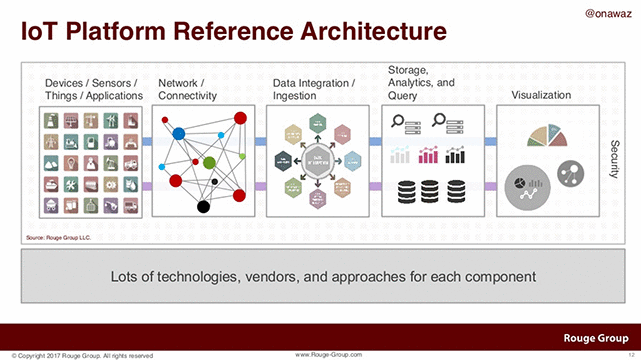
Big investments, many IoT players
“Begin with the end in mind.” This wisdom was among the main points imparted by Omar Nawaz, Founder and President of Rouge Group, during a webinar on how to efficiently implement an IoT platform.
Omar said that major vendors are actively building out their IoT product and service portfolios, stating that GE invested more than $1.5 billion in this sphere in 2016, while Qualcomm has invested more than $50 billion over the past five years.
Amidst such commitments, there are large, complex ecosystems for consumer, as well as enterprise IoT deployments. Within this context, “interoperability is critical to maximizing the value of (your) IoT deployments,” he told webinar attendees. “On average 40% of the total value that can be unlocked requires different IoT systems to work together.”
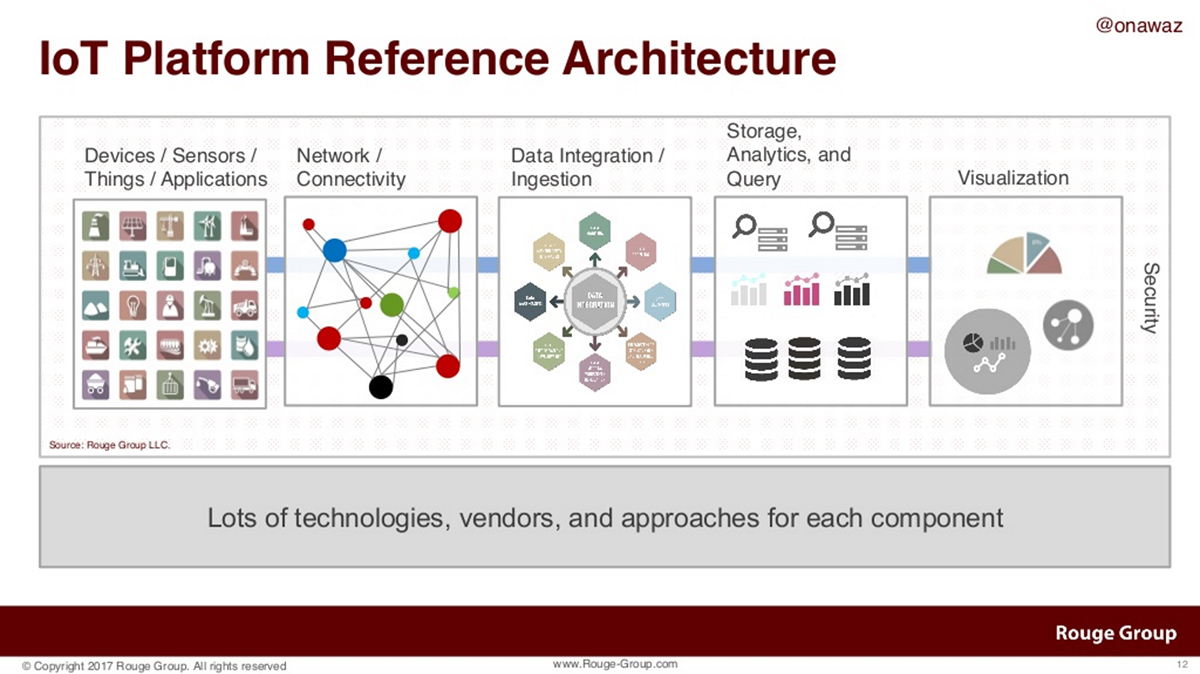
Companies should thus start their planning from the perspective of business goals and objectives, Omar believes. “Identify business objectives that will help to better serve customers and operate profitably,” he said. “Align internal capabilities, build the right governance, and life-cycle management processes.”
Five-point process for IoT success
Omar outlined a five-point process he calls “Platform Essentials” for enterprises embarking on IoT initiatives:
- Build and integrate. “An IoT platform should improve your ability to rapidly develop, test, launch, manage, and monetize your connected services,” he said. According to his presentation, there should be an ability to develop a diverse array of IoT use cases by providing software integrations and APIs; there should be management tools for development, code, and APIs; mainstream business processes should be supported and interface with enterprise applications; and there must be secure access to data via APIs.
- Manage devices and things. “An IoT platform can automate standard workflows around managing devices, reducing response times, and streamlining operations,” he said. Successful use of an IoT platform will control provisioning maintenance, operations of connected devices, and handle all configurations and updates; and provide device-level logs and statistics.
- Connect. “An IoT platform should support open standards and cross-protocol communication between devices, sensors, cloud resources, IP and non-IP based devices, as well as application APIs,” according to Omar. There must be local and long-range connectivity and gateways; network operator relationships; the ability to scale to millions of devices if required; support of multiple communications protocols; and the ability to provide connection alternatives for low-power, non-IP, and passive devices.
- Secure. “Built-in capabilities in an IoT platform can reduce deployment time and relieve developers from development and life-cycle management of such capabilities,” Omar stated. Device-based security should handle authentication and authorization, as well as secure network communications and device registry, with mutual authentication between devices and the platform. There must also be the ability to create, deploy, and manage certificates and policies from management consoles or via APIs.
- Analyze. “Platform analytics should provide actionable insights on both per-device and system level, as well as integration with existing business intelligence to generate reports on KPIs (key performance indicators) and SLAs,” according to Omar. There need to be analytics that provide relevant and meaningful insights, data must be captured and stored to enable those analytics, and there needs to be functionality to provide analytics in real time, batch mode, predictive mode, and interactively.
He mentioned a number of other things to pay attention to.
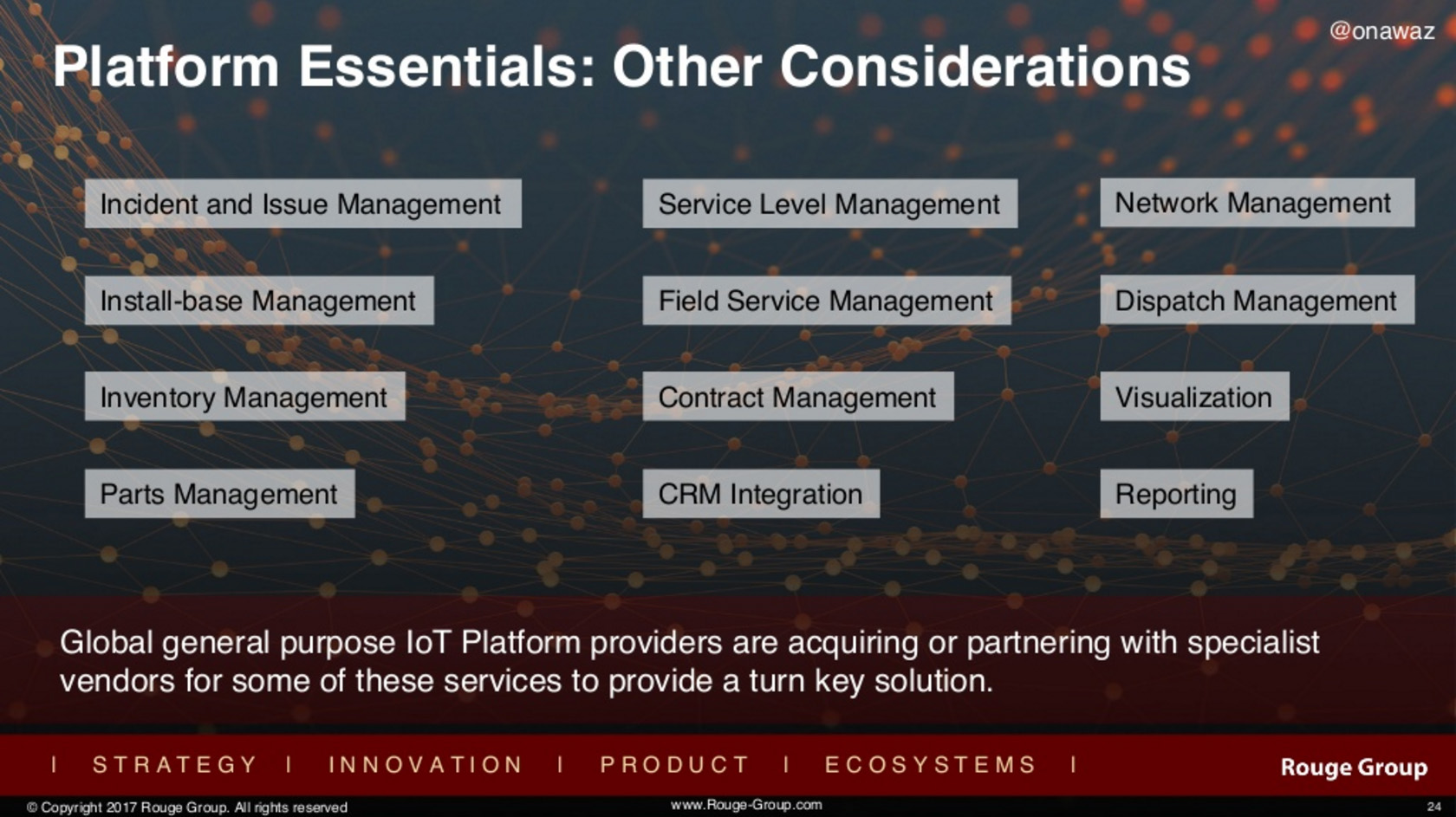
Are all platforms the same?
Omar did not focus on any particular platform, although he did mention Cloud Foundry-based GE’s Predix along the way. He noted that the top IoT platforms “start to look the same when comparing feature-by-feature,” with the result that “as the IoT market matures, (such a) comparison of IoT platforms is futile.”
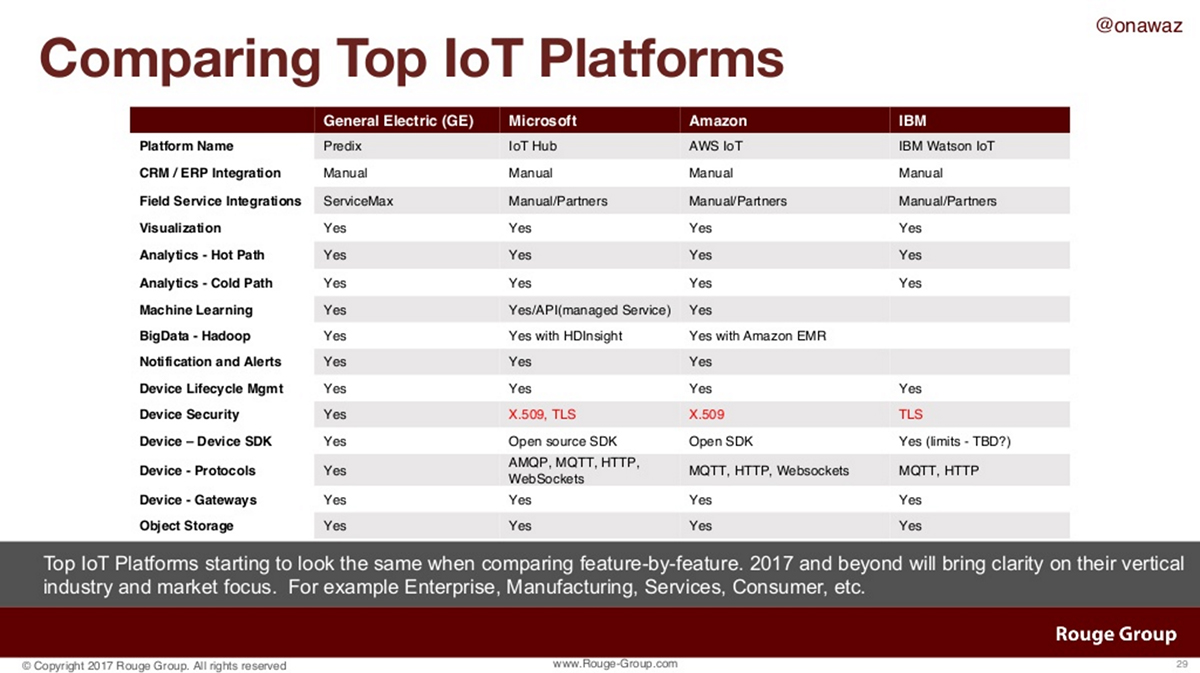
Instead, Omar suggested that IoT platform evaluation focus should be shifted to deployments, business models, ecosystems, pre-integrated technologies, and vertical solutions.
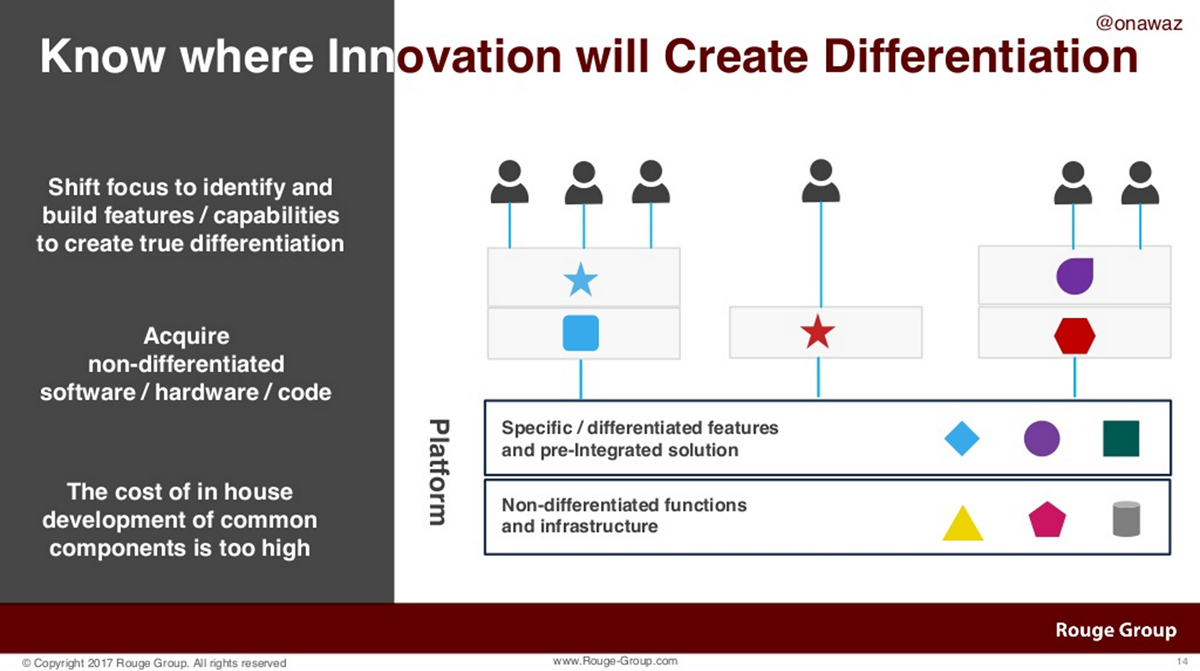
Different types of IoT providers
Omar then went onto illustrating different types of IoT platform providers and a use case example. He classified potential platform providers as general purpose IoT platforms (such as GE Predix), standalone or vertical IoT platforms (such as Xively), and IoT infrastructure services (such as Splunk).
He then offered up the use case for a fleet management company that would need to assure on-time delivery of products in an undamaged condition. This company would have several objectives:
- Improve on-time delivery performance
- Reduce fuel consumption
- Extend operational life of vehicle
- Reduce damaged goods
It would face challenges in a lack of resources, a lack of the right tools for the job, and a lack of data insights to facilitate informed decisions, Omar said. Regarding the last point in particular, he noted that “while some of this data would already be available in an existing CRM solution, key missing data like engine and tire performance, current routes, and refrigeration status would require an IoT solution.”
In this case, the company would want to partner with either a global vertical platform provider or global general purpose IoT platform provider, Omar said.
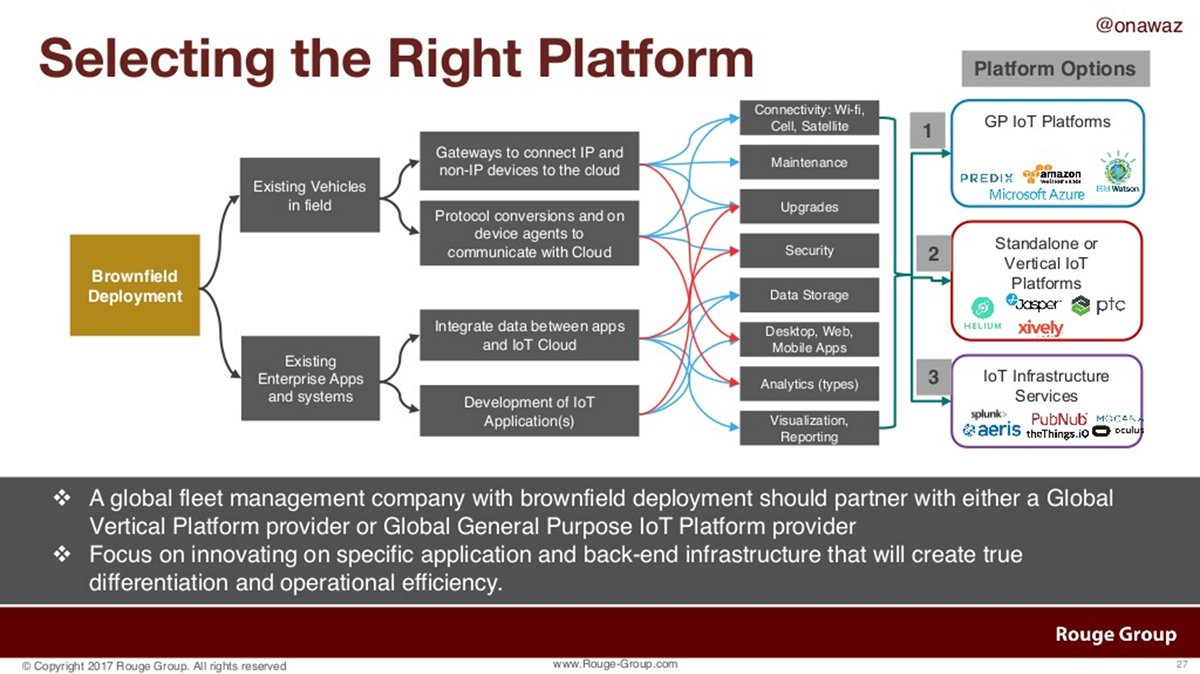
Omar said that in this case and others, “IoT strategy teams should not expect that industry standards or mega-vendors offerings alone would provide a complete solution and consistent experience for your desired business outcome.” Instead, “IoT solutions are about economics and services,” he said. “It is not just technology and interfaces.”
What’s next, this year and beyond
For 2017 and beyond, Omar told attendees, “IoT solutions will continue to scale massively and become more complex.” He urged his audience to make sure their deployments are “open, scalable, extensible, and secure. Building on the right platform will accelerate innovation and focus on creating true differentiation for your company. Leveraging existing investments—including knowledge, expertise, and tools—is vital for success of a project.”
Even with a focus on scalability and extensibility, Omar said companies can “start simple” and “connect only devices and collected data that is required to deliver the use case. More is not always better.”
Find other lessons learned in the video recording of the webinar.
Related slides
About the speaker










